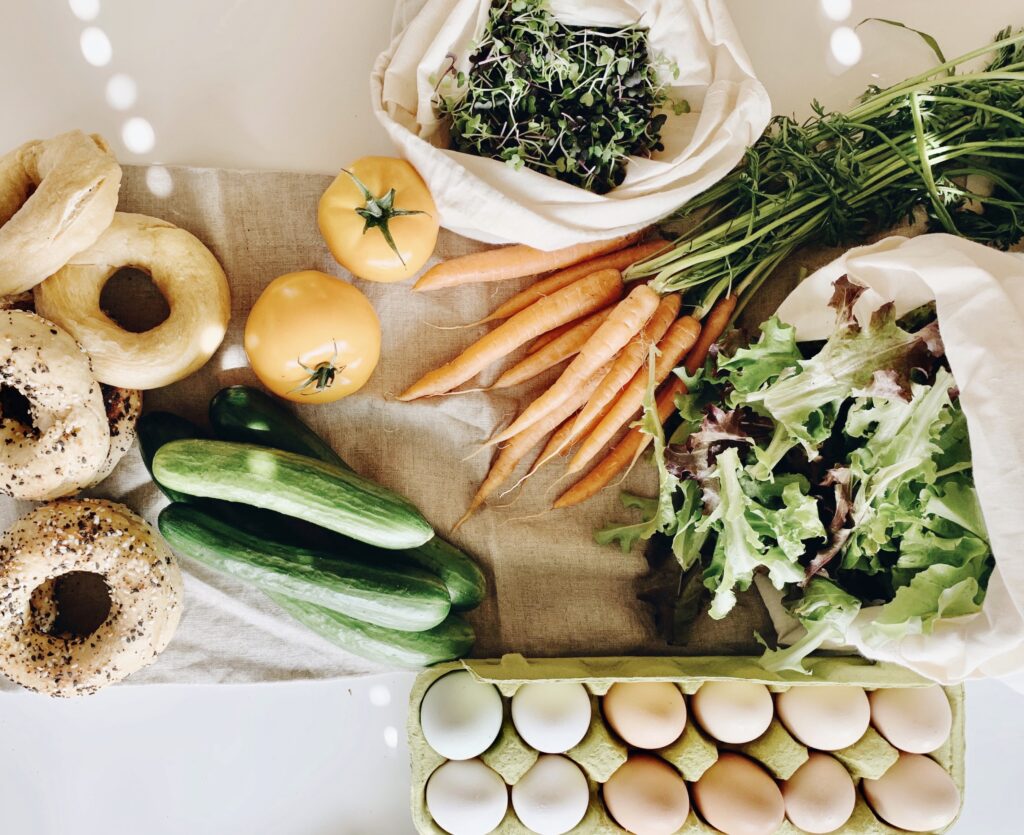In today’s day and age, it’s easy to mistrust your appetite. After all, we’ve been taught to disregard it. Read somewhere that fasting is important? Saw that eating after dark causes weight gain? All of these messages are harmful, inaccurate, and stress-inducing. In essence, they encourage you to mistrust your hunger. If you’re not sure how much to eat, when to eat, and what to eat, you’re not alone. Unfortunately, the pervasiveness of diet culture makes it difficult. Eating can quickly become confusing. I get it. Plus, everyone has an opinion. You’re probably left scratching your head, wondering—what’s best? In this guide, you’ll learn how to crowd out unnecessary noise and reconnect with your body’s natural appetite.

For the past decade, I’ve tried various styles of eating (read: diets disguised as “lifestyles”). None of them were sustainable. I was left irritable, unsatisfied, and disconnected from my body. Eventually, I turned to the power of intuitive eating. This style of eating makes YOU the expert of your body and its hunger signals. It’s the opposite of a traditional diet. It doesn’t impose guidelines on what to avoid or when to eat. Instead, it teaches you that you are the best person (the only person!) to make those choices. Intuitive eating applauses bio-individuality.
Restriction Has Consequences
Years before I became a double-certified Integrative Nutrition Health Coach and Nutrition Consultant, I thought I had a problem with my appetite. I was hungry all the time. I was desperate to control my hunger. At the time, my approach was to eat high-volume foods (think: cauliflower rice) to suppress my appetite. For example, I thought eating copious amounts of fruit or oatmeal without any added fat or protein was healthy. But, this made me starkly disconnected from my natural hunger signals. It also completely wrecked my blood sugar. In turn, it made my PCOS symptoms worse. Beyond that, restricting my intake led to overeating. It also led to binging on cookies. Unbeknownst to me, restriction and deprivation caused intense, insatiable cravings.
How To Stop The Binge Restrict Cycle
After I discovered the notion of intuitive eating, I began healing my relationship with food. It took time, of course, but the only way I was able to stop the binge-restrict cycle was to stop restricting. “All foods fit” became my motto.
If you’re not sure how to stop the binge-restrict cycle, these are four practical tips that help:
STOP RESTRICTING YOURSELF. It’s not easy to stop restricting after a binge—after all, you’re feeling incredibly full, and incredibly guilty for being so full. Know that this is a normal reaction. However, realize that by restricting one meal (or one day of eating), your body will require extra calories in the future. This, ultimately, can lead to a binge. And thus, the cycle starts all over again.
SHOW UP FOR THE NEXT MEAL. Even if you ate past comfortable fullness earlier, make sure you show up for your next meal. Plan what you’re going to eat, at what time, and get someone in your support system to hold you accountable for that next meal, if you need it. The more you can create consistency in your meal times, the more your body will crave food every 3-4 hours.
EAT EVERY 3-4 HOURS (or have a snack!). Instead of eating nothing for an entire day, thus setting yourself up for a binge at night, plan out your day’s food intake. That way, you establish a regular eating schedule. You should eat every few hours. And each day, you should be consuming an adequate amount of food for your personal needs. Not sure if you’re eating enough? Watch this. Consistently fueling your body every 3-4 hours keeps that extreme, binge-triggering hunger from taking over.
RECOGNIZE THAT FOODS ARE NOT DEFINED AS GOOD OR BAD. One of the biggest lies (spread by diet culture) is that some foods are “good” and some are “bad.” Food groups, like carbs, are cast out as “bad” and diet culture tells you that you should consume them as little as possible. This automatically creates fear foods and/or temptation foods. When you are told you’re not allowed to have something you want, you start to become consumed by the thought of this food. This is a common reason why people binge on certain foods. A big step towards freedom from obsessing about food is to realize that food is just food. It has no morality. All foods have value, whether nutritionally or mentally, even if certain foods have less nutritional value than others (i.e. canola oil vs. coconut oil).
The less you restrict, the more you’re able to live in line with the natural rhythm of your mind-body connection.
get back to the basics
With all of that in mind, let’s get back to the basics. Rather than hop on the latest diet trend or mimic your favorite influencer’s style of eating, I encourage you to get back to the basics. Meaning? Check in with your body. Without realizing it, your body is innately intuitive. It knows what it wants. However, many of us struggle to stay in sync with our natural hunger signals, given all of the messages we read and hear on social media. Having overcome this challenge, first-hand, I have practical tips for reconnecting with our bodies’ natural appetite. In turn, I can help you establish a more fulfilling relationship with food.
How to Tap Into Your Body’s Physical Hunger Cues
We all have a built-in natural appetite control system. It’s innate from the moment we enter this world, via our body’s physical hunger cues. These hunger cues are necessary for survival. However, as time goes on, and we’re exposed to unhealthy messages, we stop listening to our own hunger. With practice, you can begin to tap back into your physical hunger sensations. In turn, you can use them as a gauge for when to eat. Eventually, this will become second nature.

6 steps to Connect with Your Natural Appetite
BEFORE YOU EAT, SCAN YOUR BODY. Notice whether you have any physical hunger sensations, such as a dull headache, inability to focus, growling stomach, or an empty feeling in your belly. If you do, that’s your cue to start eating. If you can’t sense any physical signs of hunger, wait to start eating until you do.
PUT FOOD ON YOUR PLATE AND SIT DOWN. Use an actual plate, not just whatever container your food came in, and sit down (preferably at a table) while you eat.
TURN OFF DISTRACTIONS. Put away anything that might distract you from your food—your phone, laptop, TV, etc. The goal here is to be totally present with your food. You might find eating without distractions challenging at first. But, once you try eating this way, you’ll love it. Being fully present with your food enables you to enjoy it so much more.
BE MINDFUL. Eat slowly, and taste each and every bite. Notice textures, flavors, colors, and taste sensations. If it helps, keep a journal by your side and write down these sensations.
HALF-WAY THROUGH, CHECK IN. Check in with your hunger levels and observe how they change once half your plate is gone.
STOP WHEN YOU’RE UNCOMFORTABLY FULL. When you no longer notice any physical hunger sensations, that’s your cue to stop eating. Your natural appetite control has kicked in. On a scale of 0-10, 10 being uncomfortably full, you want to aim for a 7 or 8. This will take time, so be patient.
Food left on your plate? That’s okay! You can save it for later when your hunger comes back. If it can’t be saved, don’t feel guilty about composting your leftovers.
If you’re ready to improve your relationship with food, add more nutrients to your plate, understand how nutrition can support your hormones, and more, I can’t wait to chat with you. Send me an email: edie@wellnesswithedie.com, or schedule a 15-minute consultation with me here.
This article is for informational purposes only. It is not, nor is it intended to be, a substitute for professional medical advice, diagnosis, or treatment and we recommend that you always consult with your healthcare provider.



Leave a Reply